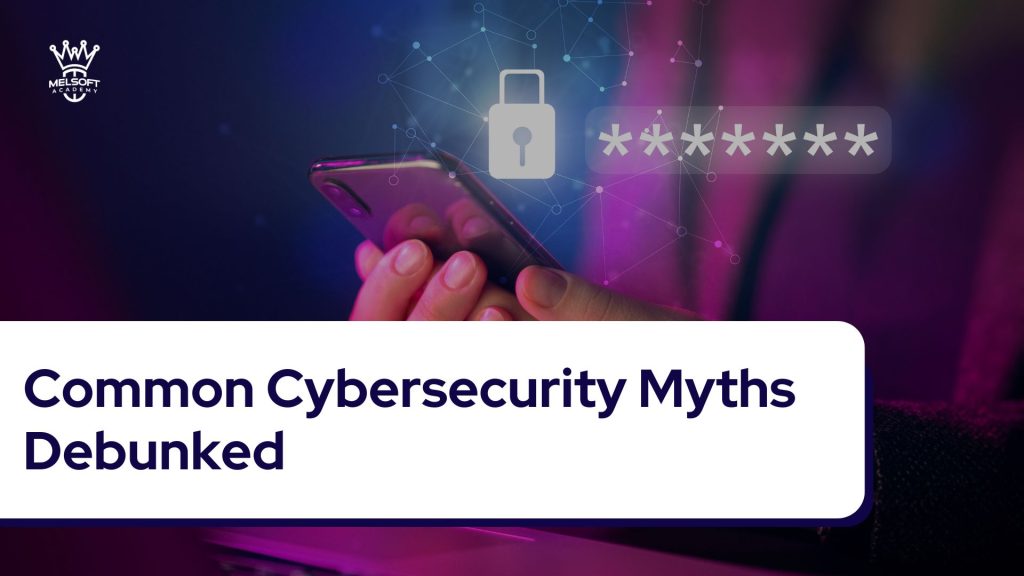The digital world offers unparalleled convenience and opportunity, but it also presents significant security risks. Cybercrime is a global phenomenon, constantly evolving and impacting individuals and organizations alike. While the headlines often focus on large-scale breaches targeting major corporations, the reality is that cybersecurity threats are pervasive, affecting everyone from individual users to multinational businesses. Understanding the landscape requires dispelling common misconceptions. This blog post will debunk ten prevalent cybersecurity myths, providing factual information and practical advice to bolster your digital defenses. By understanding what’s not true, you can build a stronger foundation for effective cybersecurity practices.
1. Myth: Only Certain People and Organizations Are Targets
A common misconception is that only large corporations, government agencies, or high-profile individuals are targets of cyberattacks. While these entities are indeed prime targets due to the value of their data, the reality is far broader. Cybercriminals employ various tactics, and many attacks target individuals directly. Phishing, spoofing, and identity theft are far more prevalent against individuals than against large organizations. These attacks are often easier to execute and can yield significant personal information, financial data, and access to other accounts. Therefore, everyone, regardless of their profile, needs to be vigilant about cybersecurity.
2. Myth: It’s Okay to Use the Same Password and Username Combination Across Multiple Accounts
Convenience often trumps security in password management. Many users employ the same password across numerous online accounts, believing a strong password is sufficient protection. This is a dangerous practice. Credential stuffing attacks, where hackers use automated tools to test known username and password combinations across various platforms, are incredibly effective. If a hacker obtains your credentials from one compromised account, they can quickly gain access to others, potentially leading to significant data breaches and financial losses. The solution is simple: use a unique, strong password for each account. Password managers can help you generate and securely store these unique credentials.
3. Myth: Phishing Emails and SMS Messages Are Always Obvious
Sophisticated phishing attacks are designed to appear legitimate. Cybercriminals invest time and resources in creating convincing emails and text messages that mimic trusted sources, complete with accurate logos, branding, and even seemingly authentic sender addresses. These messages may contain urgent requests, seemingly legitimate links, or attachments designed to install malware. Don’t rely on visual cues alone. Always verify the sender’s identity independently by contacting the organization directly through a known legitimate channel (e.g., a phone number found on their official website) before clicking any links or opening attachments. Report suspicious messages immediately.
4. Myth: Public Wi-Fi Is Secure to Use with Your Personal Devices—Especially If It’s Password-Protected
While a password-protected public Wi-Fi network offers a degree of security, it’s still significantly less secure than a private network. Unsecured or poorly secured public Wi-Fi networks are easily susceptible to eavesdropping and man-in-the-middle attacks. Cybercriminals can intercept your data, including sensitive information like passwords, credit card details, and personal communications. Using a Virtual Private Network (VPN) encrypts your data, creating a secure tunnel even when using public Wi-Fi. This is a crucial step in protecting your information when connecting to untrusted networks.
5. Myth: Any Data That’s Been Deleted Is Not Susceptible to Hackers
Deleting a file doesn’t necessarily mean it’s gone forever. Data recovery tools can retrieve deleted files from hard drives and cloud storage, even after seemingly permanent deletion. Files deleted from cloud storage often remain accessible for a period of time before being permanently removed. For hard drives, deleted files often remain until overwritten by new data. To ensure thorough data removal, use specialized data wiping tools that overwrite deleted files multiple times, making recovery extremely difficult. Regularly backing up your data to a separate, secure location can also mitigate the impact of data loss.
6. Myth: Apple Mac Computers Are Invulnerable to Malware
The belief that Macs are immune to malware is a dangerous fallacy. While macOS has historically had a lower malware infection rate than Windows, it’s not immune. Malware developers are constantly creating new threats targeting various operating systems. Mac users should employ the same level of caution as PC users, including installing reputable antivirus software, keeping their operating system and software updated, and practicing safe browsing habits. Regularly scanning your system for malware is a crucial part of maintaining its security.
7. Myth: Data Stored Via the Cloud Is Automatically Secure—With Built-In Protection From Potential Breaches
Cloud storage providers invest heavily in security, but it’s not a foolproof solution. Cloud storage offers benefits like data redundancy and offsite backups, enhancing resilience against data loss, but it’s not immune to breaches. Weak passwords, insecure Wi-Fi networks, and compromised user credentials can all lead to cloud data breaches. Using strong, unique passwords, enabling multi-factor authentication (MFA), and connecting to secure networks are essential for protecting your cloud-stored data. Choose reputable cloud providers with robust security measures.
8. Myth: Multi-Factor Authentication (MFA) Is Unnecessary
MFA adds an extra layer of security by requiring multiple forms of authentication to verify your identity. It significantly reduces the risk of unauthorized access, even if your password is compromised. Many services now offer MFA, often through methods like one-time codes sent to your phone or email, or biometric authentication. Enabling MFA is a simple yet highly effective way to protect your accounts. The minimal inconvenience is far outweighed by the enhanced security it provides.
9. Myth: Cyber Attacks Are Always the Result of Intentional, External Threats
While external cyberattacks are a significant threat, many data breaches originate from internal sources. Human error, negligence, and malicious insider activity account for a substantial portion of security incidents. Employees may inadvertently expose sensitive data through phishing scams, weak password practices, or careless handling of information. Malicious insiders can intentionally compromise systems for personal gain or other motives. Implementing robust security policies, employee training, and access controls are essential to mitigate both internal and external threats.
10. Myth: Seeking a Career in Cybersecurity Is Impossible Without a Traditional 4-Year Degree
The cybersecurity field faces a significant skills shortage. While a four-year degree can be beneficial, it’s not a prerequisite for a successful career in cybersecurity. Many employers value practical skills and experience over formal education. Specialized training programs, such as cybersecurity bootcamps, provide intensive, hands-on instruction in the skills employers demand. These programs offer a faster and more focused path into the field, allowing individuals to acquire in-demand skills and launch their careers quickly. Consider exploring options like the Melsoft Academy Cybersecurity Bootcamp to acquire the necessary skills and knowledge to excel in this growing field. The bootcamp format offers a flexible and efficient way to gain the expertise needed to pursue a rewarding career in cybersecurity. It bridges the gap between theoretical knowledge and practical application, equipping students with the skills to combat real-world cyber threats.
By understanding and addressing these common misconceptions, you can significantly improve your cybersecurity posture. Remember that cybersecurity is an ongoing process, requiring vigilance, education, and proactive measures to protect yourself and your data. Investing in your cybersecurity knowledge and skills is an investment in your future.


